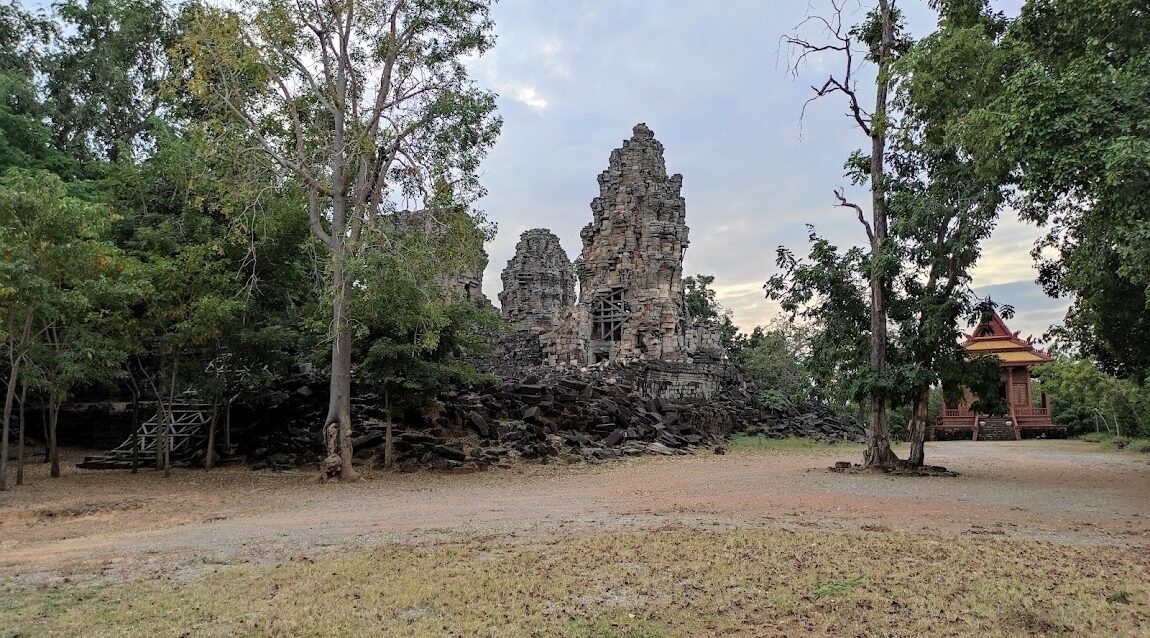Also recorded as Prasat Banteay Torp, the temple is perhaps one of the least talked about of the large ancient sites in Cambodia but certainly one packed with curiosity. The site covers a large area with the very outer perimeter of the site defined by a levee measuring 2 km a side, no substantial archeological remains exist (to date) in the large expanse until the outer laterite enclosure wall of the temple that measures 720 m x 440 m wide with entrances on the east and west. Inside the walled enclosure is a moat approx. 200 m x 200 m and 40 m wide enclosing the temple proper.
After the moat is the remains of another laterite wall, more than a meter high that is earthen filled with access stairs at each cardinal point. Joining the stairs on the east and west are large cruciform sandstone columned entrance pavilions (in ruin) that lead to another laterite retaining wall around 1 m high, that is topped by a sandstone wall also more than 1 m high that then encloses the five towers.
The five towers are unusually arranged on a cardinal axis, with a central tower and four towers around it. They are all, or were originally, interconnected by halls with the eastern tower featuring a longer hall between it and the central tower.
The scale, in terms of the height of these towers compared to relative temples, is staggering and begs the question, why? While other temples of a similar era, estimated to be around the time of Jayavarman VII (c 1122–1218), feature a standard-size doorway or in some cases reduced-size doorways to impose respect to the central idol, this set of towers have doorways that are double perhaps triple size. The temples themselves are recorded as measuring 35 m tall.
Considering the elevation achieved by the pyramid-like rising base which is also out of character for the era, one wonders, what theme was driving the architect’s intentions? Some also ponder that it was built by a later king, but no inscriptions have been found to date revealing the founder or founding date with assumptions based on the artwork and style.
If you look up in the central tower you’ll see some decorative carving around the eaves and, incredibly, remnants of the original wooden roof with a rosette pattern. Externally on the towers and around the rubble, a keen eye will spot some decorative carving here and there.
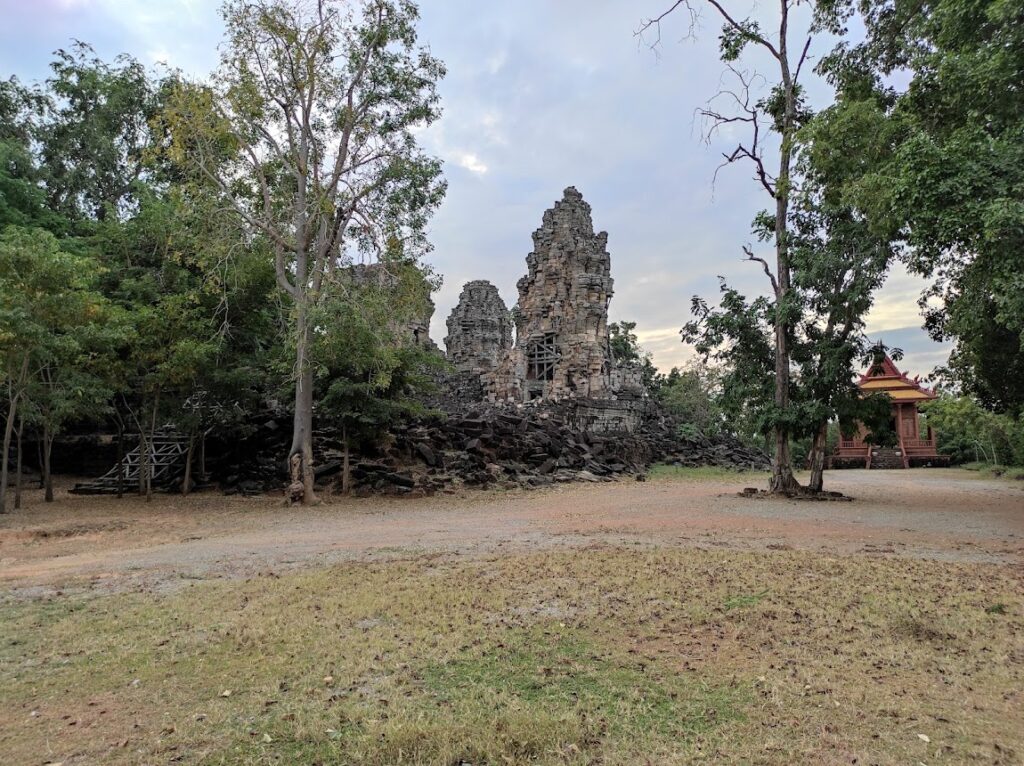
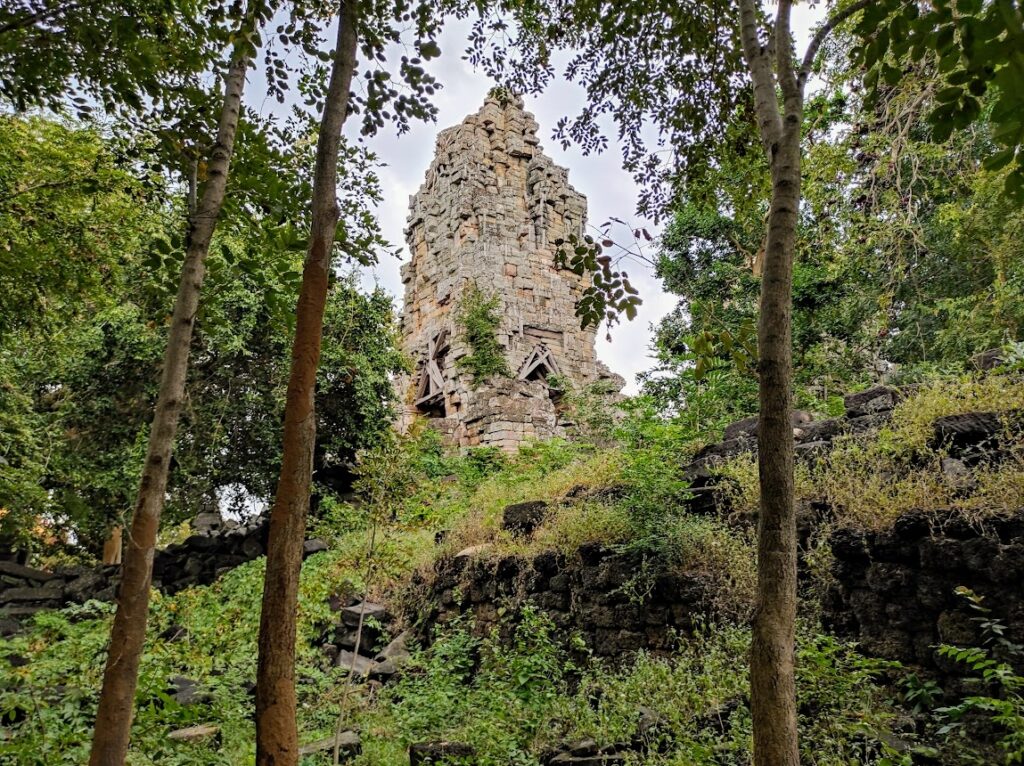


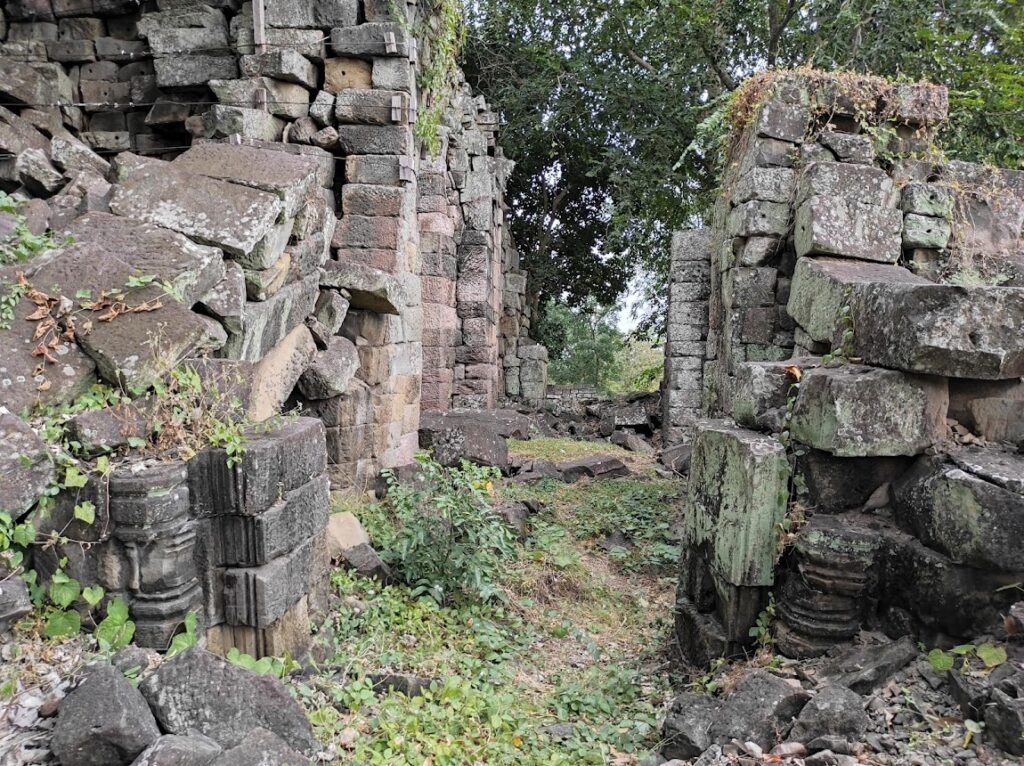
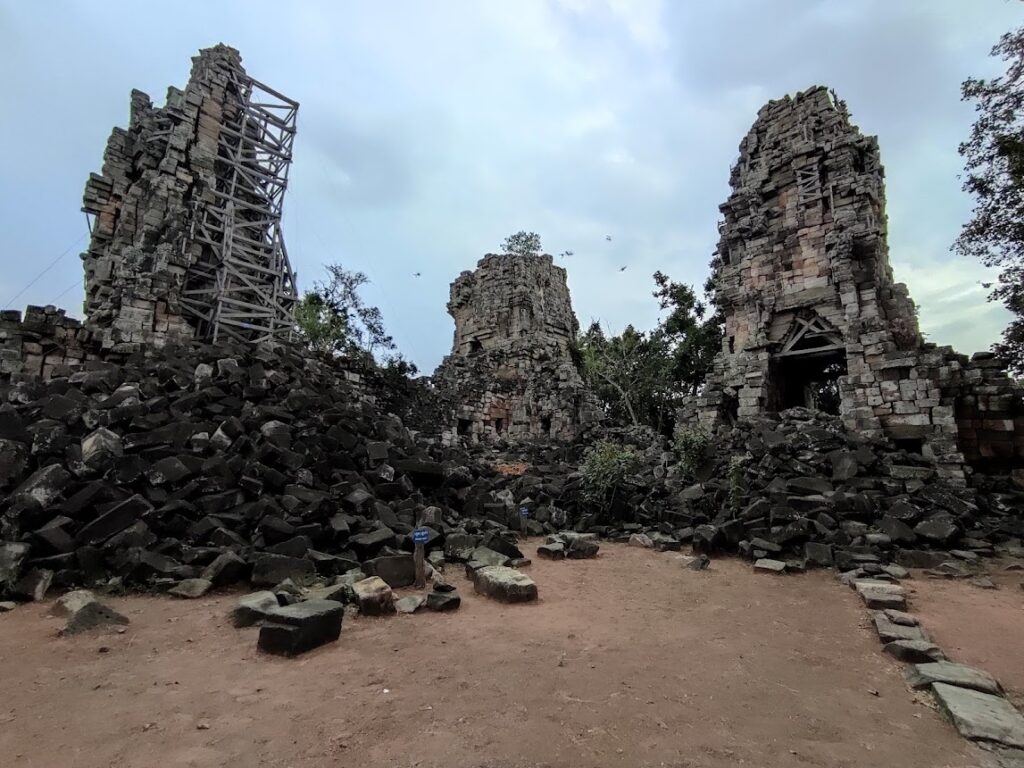



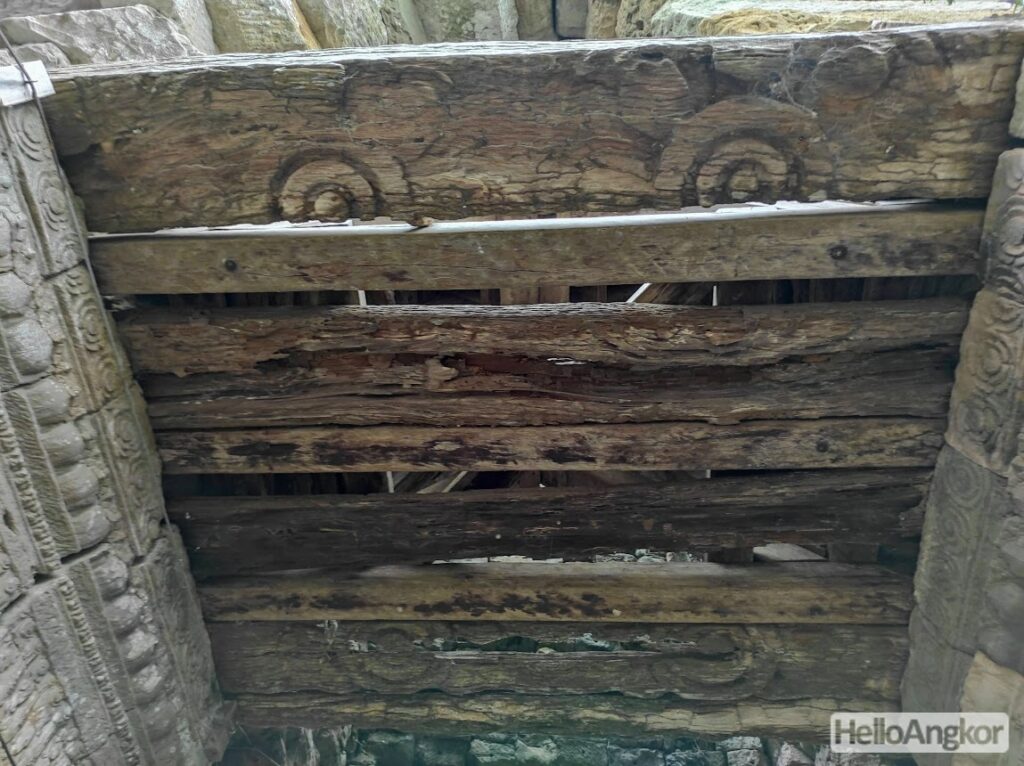
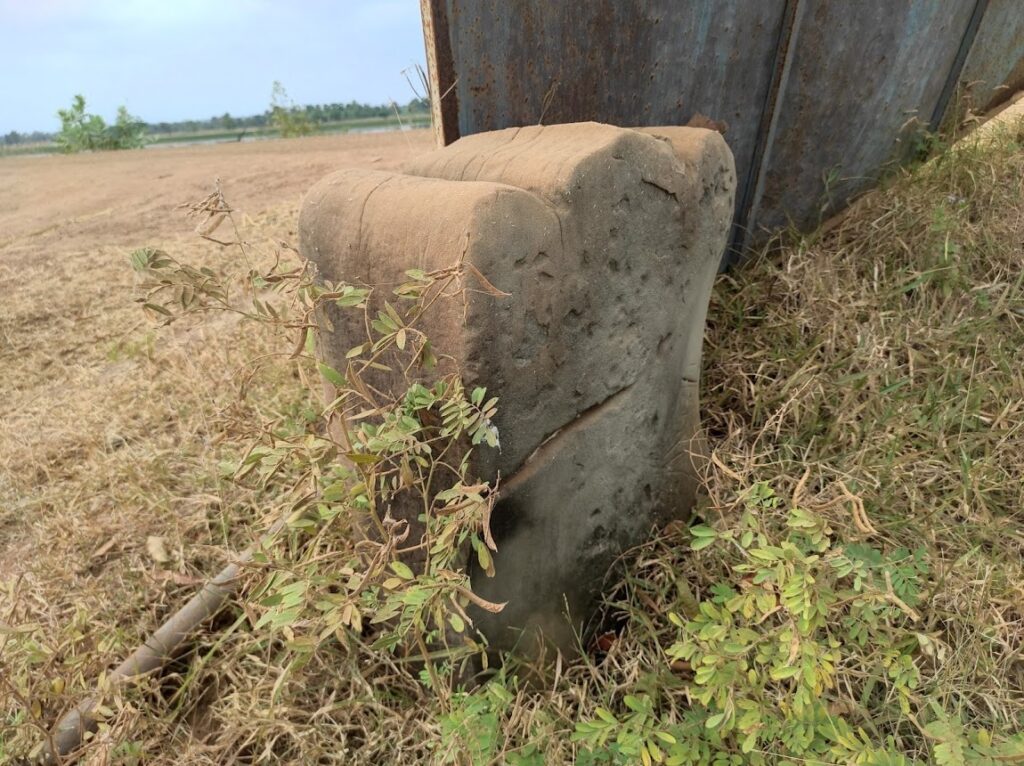
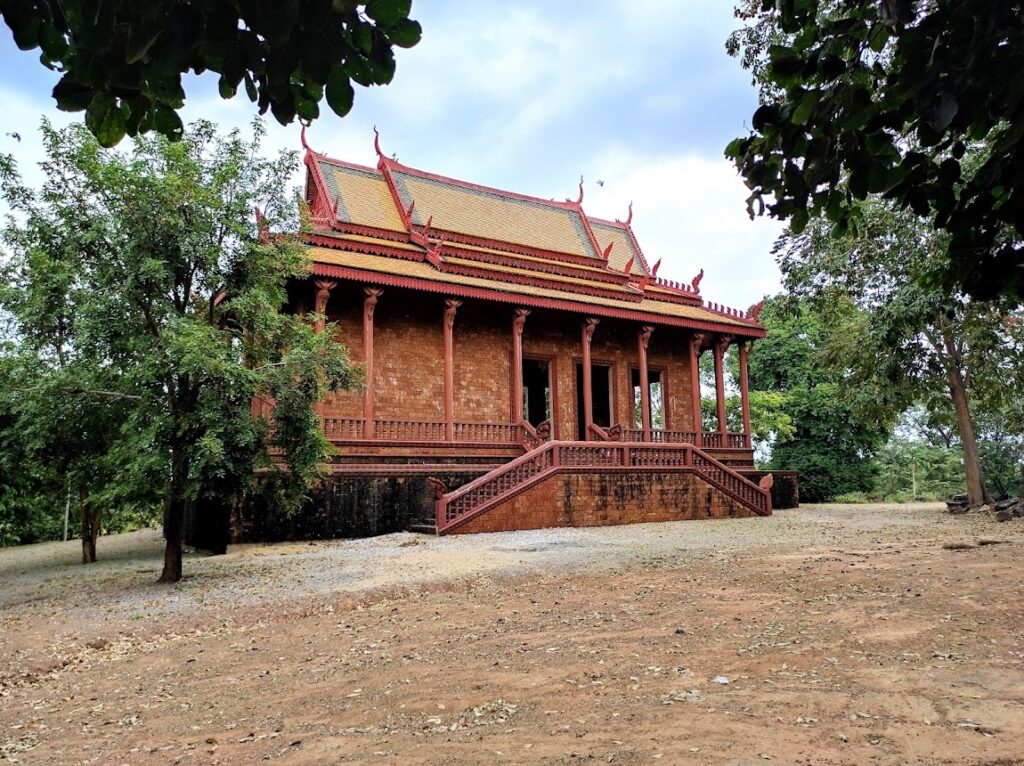
A statue of a female divinity found in the central tower resides in the National Museum.
Historical Photos (Property of EFEO) – dated to 1966
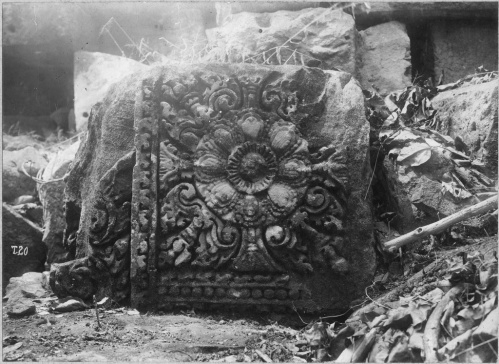

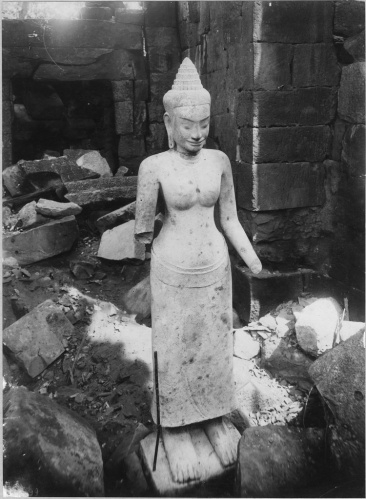
Map
Site Info
- Site Name: Banteay Toap (Pr.) Khmer Name: បា្រសាទបន្ទាយទ័ព
- Reference ID: HA11390 | Last Update: January 10th, 2022
- Other Names: Banteay Torp, Banteay Toap Temple
- Tags/Group: nwgc, pr, ra, Temples
- Location: Banteay Meanchey Province > Thma Puok District > Komru Commune > Thnal Dach Village
- MoCFA ID: 50
- IK Number: 815

